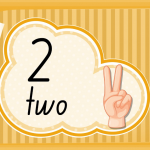Patients sometimes ask me if they are on too much medication for their diabetes, and whether we could/should decrease or stop one or several of their treatments.
One way that we assess whether diabetes is well treated is by a test called the A1C, which is a ‘report card’ of sorts, reflecting average blood sugar over the last 3 months. The target A1C for most people is 7%, but can be as low as 6.5% , or as high as 8.5%. The higher A1C targets are generally reserved for people who have hypoglycemia unawareness, elderly, frail, or with dementia. To find out your (or your patient’s) recommended target, check out this excellent A1C target calculator here.
The lower end A1C target of 6.5% provides additional protection against diabetes complications over time. However, there can be a downside of an A1C running in the lower end – namely, hypoglycemia (low blood sugars). The A1C reflects average blood sugar, and tells us nothing about the range of blood sugars. In other words, one person with an A1c of 6.5% may have perfect blood sugars, but another person with an A1C of 6.5% may have wild swings in blood sugars, with highs and lows that happen to average out to an A1c of 6.5%. (Note: ways to assess what is actually happening with blood sugars is with finger pokes, or, even better, with continuous glucose monitoring.)
The only downside to a lower A1C is if low blood sugars are pulling it down. Low blood sugars can be caused by 3 classes of diabetes medications: sulfonylureas (eg glicalizide/Diamicron), glyburide), meglitindes (eg repaglinide/gluconorm), and insulin. For a person NOT on any of these medications, there is nothing bad about having an A1C lower than 6.5% – in fact , it is good!
Older people are less likely to have symptoms of low blood sugars, so they are at risk of being overtreated with medications that cause low sugars. A recent study of nursing home residents found that 17% of residents were overtreated, and an additional 23% met their criteria for being potentially overtreated. However, I take issue with the definitions of potential overtreatment in this study, as people with A1C of <6.5% on any glucose lowering medication other than metformin were included in this category. We must remember that two classes of diabetes medications (the SGLT2 inhibitors and GLP1 receptor agonists) provide important benefits to protect the heart and kidneys, which is largely independent of their blood sugar lowering capacity. In fact, there is now evidence for SGLT2 inhibitors to treat heart failure and kidney disease in people without diabetes at all (read here and here and here)! And, two of the GLP1 receptor agonists are approved as treatments of obesity in people without diabetes (or with diabetes) (read here and here).
BOTTOM LINE: Whether a person is ‘overtreated’ for their diabetes is a very individualized discussion, based on factors including A1C, the types of medications being used, age and functional capacity, and the risk of low blood sugars (or not, depending on medications being used). Importantly, targets of treatment with diabetes medications include not only A1C (sugars), but also heart and kidney protection, treatment of obesity, and/or treatment of heart failure. Talk to your health care professional to find out if your treatments are right for you!
Share this blog post using your favorite social media link below!
Follow me on twitter! @drsuepedersen
www.drsue.ca © 2022












